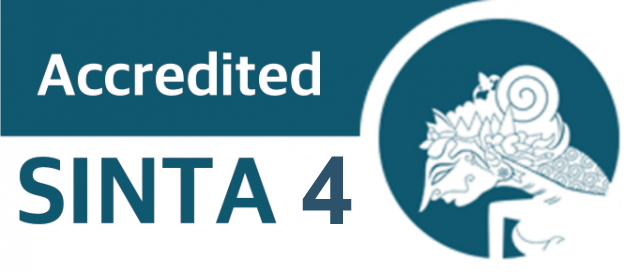The Influence of E-Books Through a Differentiation Approach Assisted with Professional Pageflip 3-Dimensions on Student Learning Outcomes on Simple Machines Topic
DOI:
10.29303/jpm.v20i1.8404Published:
2025-01-30Issue:
Vol. 20 No. 1 (2025)Keywords:
E-book; Pageflip Professional; Learning Outcomes; Simple MachinesArticles
Downloads
How to Cite
Downloads
Metrics
Abstract
This research aims to test the effect of e-books through a differentiated approach assisted by page flip professional 3-dimensions on student learning outcomes on simple machine topics. The research uses a pre-test and post-test control group design involving two classes as samples. Using e-books through a differentiated approach can reduce the problem of unequal distribution of printed books and make it possible to adapt them to each student's learning style because each student has their learning style. This is shown through the hypothesis criteria where the significance value of 0.030 is smaller than the significance level of 0.05, so H0 is rejected, and Ha is accepted. This is also supported by acquiring an N-gain Score value of 0.81 in the experimental class, which meets the high category, and in the control class, 0.51, which meets the medium category. For the N-gain percent interpretation category, the results obtained in the experimental class were 81 in the effective interpretation category, while for the control class, the results were 51 in the less effective interpretation category. This indicates that e-books, through a differentiated approach assisted by page flip professional 3-dimensions, can improve student learning outcomes, especially in simple machine topics. This research concludes that e-books, through a differentiated approach assisted by page flip professional 3-dimensions, can be an effective alternative for improving the quality of science learning in schools.
References
R. Rahayu, S. Iskandar, and Y. Abidin, “Inovasi Pembelajaran Abad 21 dan Penerapannya di Indonesia.” Jurnal Basicedu, vol. 6, no. 2, pp. 2099–2104, 2022. https://doi.org/10.31004/basicedu.v6i2.2082
A. Lailan, “Peran Teknologi Pendidikan Dalam Pembelajaran,” SENTRI: Jurnal Riset Ilmiah, vol. 3, no. 7, pp. 3257–3262, 2024.
H. Hasbiyati and L Khusnah, “Pengembangan E-Book Berekstensi Epub pada Pembelajaran IPA SMP,” Bioshell, vol. 5, no. 01, pp. 298–305, 2016.
Sanjaya, “Pengaruh Penggunaan Buku Elektronik Terhadap Hasil Belajar,” pp. 1–6, 2023. https://doi.org/10.31219/osf.io/fyu4h
H. Hisbiyati and L Khusnah, “Penerapan Media E-Book Berekstensi Epub Untuk Meningkatkan Minat Dan Hasil Belajar Siswa Smp Pada Mata Pelajaran IPA,” Jurnal Pena Sains, vol. 4, no. 1, pp.16, 2017. https://doi.org/10.21107/jps.v4i1.2775
M. Hakim and H. Hasbiyati, “Upaya Peningkatan Akivitas dan Hasil Belajar Siswa Melalui Media E-Book Berekstensi Epub,” Jurnal Educazione: Jurnal Pendidikan, Pembelajaran Dan Bimbingan Dan Konseling, vol. 6, no. 2, pp.105-111, 2018.
S. Suwartiningsih, “Penerapan Pembelajaran Berdiferensiasi untuk Meningkatkan Hasil Belajar Siswa pada Mata Pelajaran IPA Pokok Bahasan Tanah dan Keberlangsungan Kehidupan di Kelas IXb Semester Genap SMPN 4 Monta Tahun Pelajaran 2020/2021,” Jurnal Pendidikan Dan Pembelajaran Indonesia (JPPI), vol. 1, no. 2, pp. 80–94, 2021. https://doi.org/10.53299/jppi.v1i2.39
M. Armin, “Efektivitas Penggunaan Media Interaktif Berbasis 3D Pageflip Terhadap Hasil Belajar Siswa Pada Mata Pelajaran IPA Kelas VIII SMP Muhammadiyah Pangsid,” 2021.
T. Abdjul, Nurhayati, N. Katili, and N. E. Ntobuo, "Effect of Using 3D Pageflip Learning Media on Student Learning Outcomes in Vibration and Wave Material," Jurnal Penelitian Pendidikan IPA, vol. 9, no. 11, pp. 10016–10021, 2023. https://doi.org/10.29303/jppipa.v9i11.5306
Y. Yolanda, A. Sofiarini, and C. Abadi, “Lokakarya Guru SMA Tentang Penyusunan Modul Ajar Berdiferensiasi Kurikulum Merdeka Berbantuan Aplikasi Flip Book.” REKA KARYA: Jurnal …, vol. 2, pp. 175–188, 2023.
S. Sulviana, “Penerapan Media Buku Elektronik Biologi Untuk Meningkatkan Motivasi Aktivitas Dan Hasil Belajar Peserta Didik Pada Siswa Kelas Xi Ipa1 Sma Negeri 5 Sidrap,” (Doctoral dissertation, Pascasarjana), 2019.
F. Fahrizandi, “Mengenal E-Book Di Perpustakaan,” Pustabiblia: Journal of Library and Information Science, vol. 3, no. 2, pp. 141–157, 2019.
https://doi.org/10.18326/pustabiblia.v3i2.141-157
D. Z. Martha, P. E. Adi, and Y. Soepriyanto, "mobile learning," pp. 109–114, 2018.
E. Mulyasari, “Kurikulum Berbasis Understanding by Design (UbD) Untuk Membangun Kemandirian Siswa Sekolah Dasar,” Jakarta: Damera Press, 2024.
Elviya, D. D., & Sukartiningsih, W. (2023). Penerapan pembelajaran berdiferensiasi dalam kurikulum merdeka pada pembelajaran Bahasa Indonesia kelas IV sekolah dasar di SDN Lakarsantri I/472 Surabaya. Jurnal Penelitian Pendidikan Guru Sekolah Dasar, 11(8), 1780-1793.
S. R. Ramadhina and K. Pranata, “Pengembangan E-Modul Berbasis Aplikasi Flipbook di Sekolah Dasar,” Jurnal Basicedu, vol. 6, no. 4, 2022. https://doi.org/10.31004/basicedu.v6i4.3470
R. Damayanti and A. F. Dewi, “Penerapan Pembelajaran Berdiferensiasi Dengan Metode Inkuiri Terbimbing Terhadap Keaktifan Dan Hasil Belajar,” BIOMA: Jurnal Biologi dan Pembelajarannya, vol. 6, no. 1, pp. 58–72, 2024. https://doi.org/10.31605/bioma.v6i1.3516
D. A. Nafiati, “Revisi taksonomi Bloom: Kognitif, afektif, dan psikomotorik,” Humanika, vol. 21, no. 2, pp. 151–172, 2021. https://doi.org/10.21831/hum.v21i2.29252
M. Arumsari, S. Santoso, and N. Hamidi, “Pengaruh Motivasi Belajar Dan Keaktifan Belajar Terhadap Prestasi Belajar Siswa SMK Negeri Di Kota Surakarta,” Tata Arta: Jurnal Pendidikan Akuntansi, vol. 8, no. 1, 2022.
E. L. Bura, Y. Y. Yeyen, M. E. Suban, and A. Wajong, “Analisis Kemampuan Pemecahan Masalah Peserta Didik pada Materi Fluida Statis Berbantuan 3D Pageflip Professional,” Journal on Education, vol. 06, no. 03, pp. 15871–15878, 2024. https://doi.org/10.31004/joe.v6i3.5464
N. I. Mahardika, M. Muslimah, and T. Nurita, “Implementasi PBL Terintegrasi TaRL dan CASEL untuk Meningkatkan Peran Aktif dan Hasil Belajar Siswa pada Pembelajaran IPA,” PENDIPA Journal of Science Education, vol. 8, no. 2, pp. 114–120, 2024. https://doi.org/10.33369/pendipa.8.2.114-120
A. Narlan and T. D. Juniar, “Statistika Dalam Penjas Aplikasi Praktis Dalam Penelitian Pendidikan Jasmani,” Sleman: CV Budi Utama, 2018.
D. Harefa et al., “Teori Statistik Dasar,” Sukabumi: Jejak, 2023.
A. D. Setyawan et al.,“Buku Ajar Statistika,” Indramayu: CV Adanu Abimata, 2021.
A. M. Yahya and M. Ali, M. “Analisis Semiotika Pada Film Kehormatan Dibalik Kerudung Karya Ma’mun Affany,” CENDEKIA: Jurnal Ilmiah Pendidikan, vo. 11, no. 1, pp. 63-73, 2023. https://doi.org/10.33659/cip.v11i1.266
A. Kurniawati, S. Sumedi, and S. Mintasih, “Hubungan Tingkat Penggunaan Gadget dengan Kelelahan Mata Dan Interaksi Sosial Anak pada Siswa di Sekolah Dasar Negeri Cinere 03,” Quantum Wellness: Jurnal Ilmu Kesehatan, vol. 1, no. 3, pp. 130-138, 2024. https://doi.org/10.62383/quwell.v1i3.742
H. Nurhayati and N. W. L. Handayani, “Jurnal basicedu,” Jurnal Basicedu, vol. 3, no. 2, pp. 524–532, 2020. https://journal.uii.ac.id/ajie/article/view/971
M. Ningrum, Maghfiroh, and R. Andriani, “Kurikulum Merdeka Belajar Berbasis Pembelajaran Berdiferensiasi di Madrasah Ibtidaiyah,” EL Bidayah: Journal of Islamic Elementary Education, vol. 5, no. 1, 2023. https://doi.org/10.33367/jiee.v5i1.3513
S. T. Nurfajariayatin, M. Masykuri, and L. Mahardiani, “Pengembangan Bahan Ajar Digital 3d Page Flip Menggunakan Discovery Learning pada Materi Alkohol,” vol. 21, no. 2013, pp. 209–216, 2024.
S. Sainab, “Pengaruh Penerapan Bahan Ajar E-Book Terhadap Hasil Belajar Peserta Didik Kelas VIII pada Materi Sistem Pernapasan Manusia,” ANTHOR: Education and Learning Journal, vol. 2, no. 3, 2023. https://doi.org/10.31004/anthor.v2i3.141
R. R. Hake, "Interactive-engagement versus traditional methods: A six-thousand-student survey of mechanics test data for introductory physics courses," American Journal of Physics, vol. 6, no. 1, pp. 64–74, 1998. https://doi.org/10.1119/1.18809
B. A. Siswanti and E. R. Indrajit, “Problem Based Learning,” Yogyakarta: CV Andi Offset, 2023.
K. S. Kartini and I. N. T. A. Putra, “Pengaruh Penggunaan Media Pembelajaran Interaktif Berbasis Android Terhadap Hasil Belajar Siswa,” Jurnal Redoks : Jurnal Pendidikan Kimia Dan Ilmu Kimia, vol. 3, no. 2, pp. 8–12, 2020. https://doi.org/10.33627/re.v3i2.417
D. J. K. Telaumbanua, I. Zega, and A. Bawamenewi, “Pengembangan E-Modul Menggunakan 3D Pageflip Professional pada Materi Biografi di Kelas X SMA Negeri 1 Gunungsitoli,” Jurnal Multidisiplin Madani, vol. 2, no. 10, pp. 3706–3709, 2022. https://doi.org/10.55927/mudima.v2i10.1535
Author Biographies
Asih Nurbaiti Gimnastiar, Science Education Study Program, Universitas Negeri Gorontalo
Tirtawaty Abdjul, Science Education Study Program, Universitas Negeri Gorontalo
Nurhayati Nurhayati, Science Education Study Program, Universitas Negeri Gorontalo
Abdul Haris Odja, Science Education Study Program, Universitas Negeri Gorontalo
Muhammad Yusuf, Science Education Study Program, Universitas Negeri Gorontalo
Citron S. Payu, Science Education Study Program, Universitas Negeri Gorontalo
License
Copyright (c) 2025 Asih Nurbaiti Gimnastiar, Tirtawaty Abdjul, Nurhayati Nurhayati, Abdul Haris Odja, Muhammad Yusuf, Citron S. Payu

This work is licensed under a Creative Commons Attribution 4.0 International License.
The following terms apply to authors who publish in this journal:
1. Authors retain copyright and grant the journal first publication rights, with the work simultaneously licensed under a Creative Commons Attribution License 4.0 International License (CC-BY License) that allows others to share the work with an acknowledgment of the work's authorship and first publication in this journal.
2. Authors may enter into separate, additional contractual arrangements for the non-exclusive distribution of the journal's published version of the work (e.g., posting it to an institutional repository or publishing it in a book), acknowledging its initial publication in this journal.
3. Before and during the submission process, authors are permitted and encouraged to post their work online (e.g., in institutional repositories or on their website), as this can lead to productive exchanges as well as earlier and greater citation of published work (See The Effect of Open Access).











